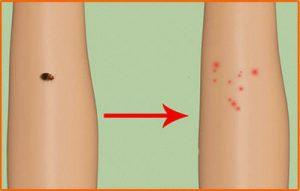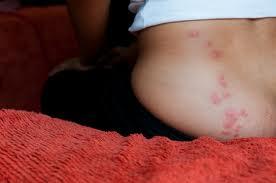 Remember when “sleep tight and don’t let the bed bugs bite” was just a cute bedtime expression that didn’t mean anything? Well, those days are over.
Remember when “sleep tight and don’t let the bed bugs bite” was just a cute bedtime expression that didn’t mean anything? Well, those days are over.
After 6 decades of living largely bed bug-free, the US is facing a national infestation and it’s time to protect your home against it. Bed bugs were basically eradicated from the developed world but as their resistance to regular insecticides grew, they started spreading once again.
In fact, the incidence of bed bug infestation has risen 500% in the last few years alone, and they’re not just in dirty hotels – they’re at the 5-star ones as well and swarming the public places you visit every day.
Bed bugs are shutting down businesses and being found at your movie theaters and clothing stores as they inch closer and closer to your home. It’s become imperative to know how to identify and destroy bed bugs in order to protect your home.
Download the Free step by step guide on how to destroy bed bugs HERE
1. The Correct Way To Identify Bed Bugs

Bed bugs that infect homes are called common bed bugs or Cimex lectularius by scientists. They are small parasites that feed exclusively on human blood and usually some out to seek food at night. The best way to identify a bed bug is to find one and compare it to the pictures above.
The first bed bug that’s transparent is a bed bug nymph, but when they become mature they are of brown/reddish color. They are about 4 mm in length and move around relatively slowly.
 If you uncover your bed lining you could find their nesting grounds filled with excrement or even find a few live ones (adult females lay hundreds of eggs in their short lifetimes).
If you uncover your bed lining you could find their nesting grounds filled with excrement or even find a few live ones (adult females lay hundreds of eggs in their short lifetimes).
You will know you’ve been bitten by a bed bug if you have several red itchy spots that are often spaced in lines. Most common place for bed bugs to bite are arms and shoulders. You might also find blood stains on your bed and your sheets. Finding fecal spots or skin from their shedding is a sure sign too.
As babies, they are as tiny as pinheads. A full-grown adult that’s been making a nightly meal of you can balloon to the size of Lincoln’s head on the penny.
2. The Rarely Mentioned Uncommon Bed Bug Hiding Sp.
 Potentially infested areas include pillows, mattresses, box springs, bed frames, head boards, bed rails, closets, carpeting,
Potentially infested areas include pillows, mattresses, box springs, bed frames, head boards, bed rails, closets, carpeting,
furniture, purses, briefcases, luggage, and all cracks and crevices where a bed bug may hide.
We’ve even heard from people they found bed bugs hiding behind picture frames. It’s therefore imperative to take time and look at any potential places bed bugs might hide since it’s so easy to overlook an isolated colony living in small crack.
Many people introduce bed bugs to their homes by buying old furniture or items that were from homes infested with bed bugs.
Bringing them from a travel is also easy, if you do not check your room when traveling you might introduce bed bugs to your clothes and bring them to your home that way.
On the next page we will tell you what you can to today to protect yourself.
Read 3. How to get rid of bed bugs without breaking the bank

